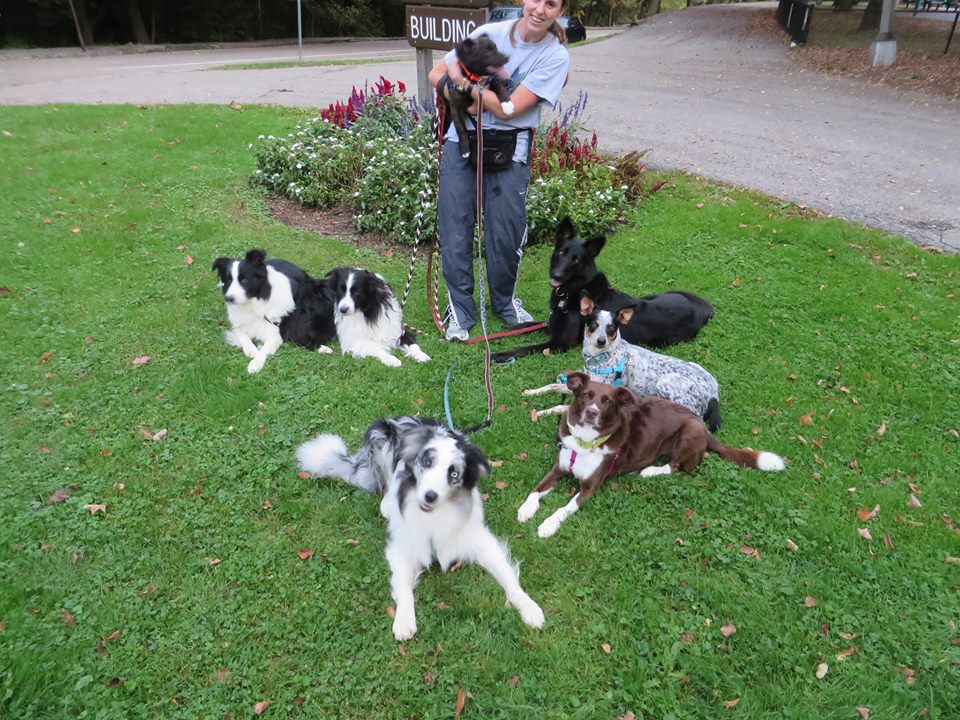Gotta Buy Into Training–Throwback Thursday
Originally posed on 10/18/11
How many times have you heard “I’ve tried everything to get my dog to …”? I think I must hear something to that effect more than once a week from people inquiring about training or in classes. People seem to expect instantaneous results from the training that if, within 48hrs, the behavior has not 100% resolved itself they opt to start trying another method.
I got this 11 week old puppy about 3 weeks ago. He’s the sweetest thing ever and I love him ever so much. The problem I’m having is that he is refusing to potty OUTSIDE. I take him outside and as soon as we come inside he squats and pees or runs off and poops in another room. I’m absolutely out of ideas! My landlord is going to evict him (or me) if I can’t get him to stop pottying inside. I have tried EVERYTHING and nothing has worked. I tried using a cage, I tried using the pee-pads, I tried yelling at him when I saw a puddle, I rubbed his nose in it, I tried to praise him when he went potty outside, and tried only giving him access to food and water sometimes. I’m so frustrated… I really have tried everything and nothing worked!!! Please help!
So what’s wrong in that scenario? First, my guess is the expectations are way too high for the puppy… my guess is that the owner wants the puppy to hold it for longer than the puppy is physically capable. Second, in just 3 weeks he’s tried a multitude of ‘methods’ to teach the dog to potty outside …but hasn’t been consistent with any of them.
I’m not saying that you can only use one method to train a behavior at all. I use multiple methods to train behaviors all the time but I do it in a consistent manner. For example, when teaching loose leash walking, I may spend time working on high rate of reinforcement focus training (the “follow me” game), shaping a dog to hang on my left side, and using hand targeting to teach positioning. But what I’m not doing is jumping around from left to right and never reestablishing foundation of a given method. I spend time working all of the skills and don’t bounce around and give up on any of them after just a day or two. People need to be consistent in their spending two days on a technique and then ditching it for something else is what becomes problematic.
It’s really important to buy-into and trust the training you are doing with your dog. Have some faith that training methods have some validity and that there will be change in behavior. I generally suggest a ballpark of 2 weeks of following a plan before making changes (as a basic starting point, depending on the issue it may be more or less). If there is no change, then it’s probably time to give some other method a go but if there have been improvements… well, chances are you won’t want to change methods.
I tell my students all the time that if they buy into the methods and give them a chance to work, that they will be really pleased with the results. I’d say a fair number of my students have either previously trained using physical corrections before or have seen some popular TV shows and try to emulate those techniques. It’s not uncommon for me to catch them giving leash pops or foot taps until the third class (most often I see it in the parking lot when students are entering/exiting). I work with them and teach them techniques for keeping their hands quiet and using other cues to achieve the behavior they want and working on their impulse control. Generally, if they buy into the training and give it time to work, they are more than pleased with the results. By week 4 there is nary a leash-pop in sight and the handlers are committed to the training. However, when students don’t buy into the training, and mix and match what they are doing, and are not consistent in their training, they rarely get the results they want.
It’s really not about how much you try but how well you try it. Give the training time to make a difference. If the person in the potty-training example would have simply spent the three weeks working with the crate and rewarding the desirable behavior he probably would have had a really good start on potty training. Instead, he has a puppy who is probably confused and is no closer to being potty trained than when he first started. Have some faith and give the training a chance to make a difference.
I suppose it’s also equally as important to realize when things aren’t working and to make a change. There I go being all in consistent and flip-flopping! But seriously… if you’ve given a method about two weeks and you haven’t seen any difference (even small) then it may be time to reassess the situation. But you really have to give things time and your full effort before shrugging it off and trying something new.

This photo is the result of years of commitment to working through Shayne’s fear/reactivity issues. I really had to buy in to her training plan to see a change in behavior. None of the techniques I used were quick fixes and they all took time to show improvements, but sticking with them and giving them time to work has really paid off with great results! Here she is with 4 other dogs, 2 of whom she’d never met before and 1 she only met once before! (Yes, it was a herding dog convention LOL!) *photo is new edition to the blog post
